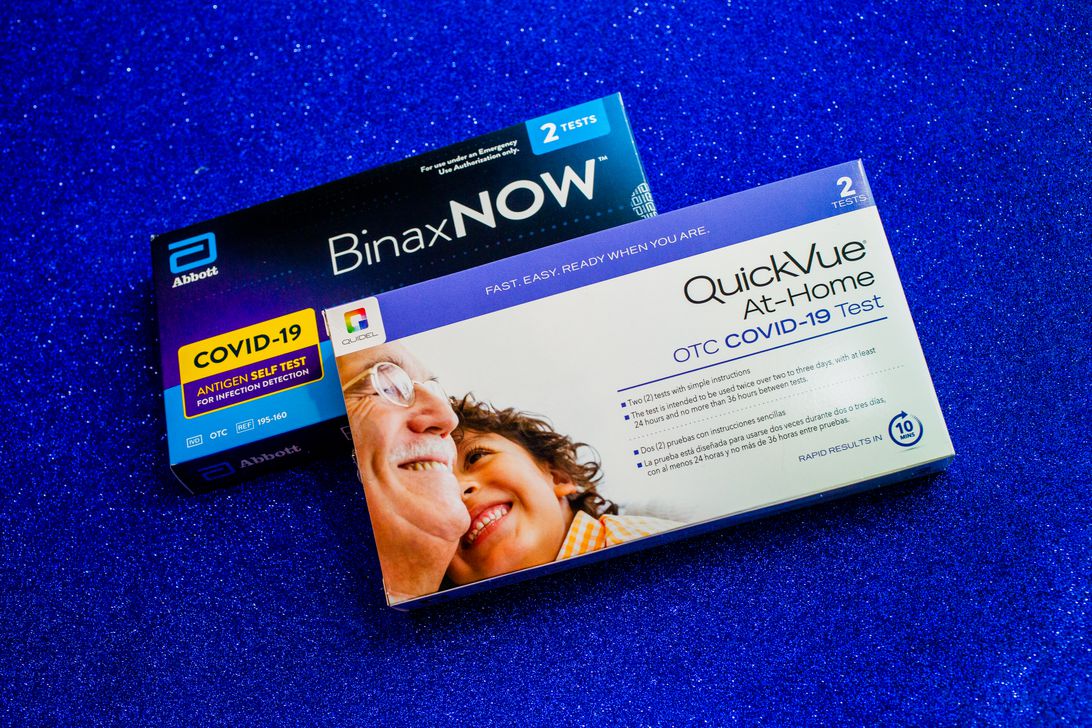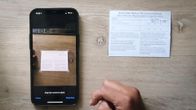
Free tests from the government will launch on Jan. 19 via COVIDTests.gov.
Sarah Tew/CNET
US health insurance providers must now pay for at-home COVID test kits, per federal law. Customers can be reimbursed for up to eight tests per month per individual or receive them at no cost from participating “in-network” pharmacies. That means a family of five with health insurance will be able to receive a maximum of 40 free tests per month.
No health insurance? Americans without health insurance can soon receive free at-home COVID tests directly from the federal government. Starting Wednesday, Americans will be able to request four free at-home COVID-19 tests per household at COVIDTests.gov, with kits shipping within seven to 12 days.
“This program will ensure that Americans have at-home, rapid COVID-19 tests available in the weeks and months ahead — in addition to the number of other ways they can get tested,” the White House said on Friday. “The administration is quickly completing a contracting process for the unprecedented purchase of 1 billion at-home, rapid tests to distribute as part of this program.”
For more information on COVID-19, get the latest on the best masks for COVID, how to pick the right booster shot and how to tell the difference between COVID, the flu, or a cold.
How do I get free at-home COVID-19 tests?
Beginning Wednesday, Americans will be able to request four free tests per household online at COVIDTests.gov. The US Postal Service will deliver kits in the continental US through First-Class Package Service. Shipments to Alaska, Hawaii, US Territories and any military addresses will be sent through Priority Mail.
According to a White House statement, the kits will usually ship within seven to 12 days of ordering.
President Biden announced Thursday the government was doubling the number of available free tests to 1 billion and providing 5 million PCR tests for free to schools per month. Several states have already started issuing free at-home COVID-19 tests to residents, including Colorado, Massachusetts, Iowa, Connecticut, Washington, New Jersey, Maryland, Ohio, Oregon, and New Hampshire. Washington, DC, is making at-home tests available for pickup at area libraries while other cities, such as New York and Boston, are distributing them to local health clinics. We’ll continue to update this list as more start offering free COVID tests.
How to get reimbursed for at-home COVID-19 test kits
As of Jan. 15, health insurance companies will be required to reimburse Americans for eight at-home antigen tests per person a month, under a plan announced by Biden. If an individual has been directed to undergo COVID-19 testing by their medical provider because of underlying health conditions or other factors, there is no limit on the number of tests covered.
Carriers can establish in-network pharmacies where the cost will be covered up front, and cap coverage at out-of-network retailers at $12 per test.
Though the Biden plan is not retroactive, some states — including Vermont — mandated that insurers start paying for at-home kits earlier.
You may also want to check with your employer, as some private companies also began offering reimbursement options for at-home tests before the Jan. 15 deadline.
Do Medicare and Medicaid providers cover at-home COVID test kits?
Biden’s new rules on reimbursement for at-home COVID-19 tests don’t currently apply to Medicaid and Medicare, although Bloomberg Government reports test kit producers are lobbying to change that.
People with Medicare — a free federal program for all Americans 65 and older — who also have private health insurance can receive reimbursement from their insurer.
State Medicaid and Children’s Health Insurance Program, aka CHIP, programs are currently required to cover FDA-authorized at-home COVID-19 tests without cost-sharing, according to HHS.
What if you don’t have health insurance?
For those without insurance, Biden said there will be “thousands of locations” where you can pick up free COVID-19 test kits to use at home in private, rather than get swabbed in a drive-thru clinic.
Those who don’t have health insurance can also access free kits at community health clinics and other local sites. The Department of Health and Human Services offers a search tool for finding community-based testing sites for COVID-19.
Where can I buy at-home COVID-19 tests?
At-home rapid COVID-19 tests are usually available at pharmacies like Walgreens, Walmart and CVS, and via online retailers like Amazon. The White House is allowing insurers to establish a roster of in-network pharmacies and to cap coverage of kits bought at out-of-network retailers. Check with your insurance company to see which stores are in your network.
But the rapid spread of the omicron variant has led to a test kit shortage and forced retailers to place limits on how many you can purchase in many regions: Walgreens currently allows each customer to purchase a maximum of four at-home tests, while CVS sets its limit at six. Walmart caps online purchases to eight tests but has no limit on in-store purchases.
Rapid antigen at-home tests are out of stock in stores and online in many regions. A recent study by the Kaiser Family Foundation the first week of January found at-home COVID tests available online only 10% of the time.
As of Jan. 16, Walgreens has BinaxNow available at $24 for two tests. Walmart has On/Go’s 10-minute self-test available on its website at $24 for two tests. Amazon currently has iHealth tests in stock at $20 for two tests. We’ll continue to update as availability changes.
If your area drugstore is out of test kits, try your state or local health department, as many have started distributing free kits to residents. See the next section for more information and links to the states currently providing free at-home COVID tests.
How much do at-home COVID-19 tests cost?
Rapid antigen tests are generally much cheaper than home collection tests. Costs vary from brand to brand, but kits generally run about $10 to $15 apiece, with two tests per kit.
Both Walgreens and CVS are selling Abbott’s BinaxNow and Quidel’s QuickVue tests — two of the first authorized by the FDA — for $24 for a pack of two. Acon’s FlowFlex rapid test is currently $10 for one test at both Walgreens and CVS. The On/Go kit of two rapid tests is currently selling for $25 on Amazon and $30 on Walmart.
Home collection tests, which require a nasal swab or saliva sample to be sent to a lab for analysis, cost much more than the rapid antigen tests and require a much longer waiting period to get results. But the “molecular” tests are considered far more accurate than antigen tests. CVS and Walgreens are selling Labcorp’s Pixel home-collection test for $125.
The extreme shortage of kits has led some to resell them on platforms like Craigslist, eBay, Facebook, Instagram and even TikTok, often at an inflated price and with fraudulent merchandise.
“We’ve received reports that unauthorized sellers are trying to profit from the pandemic by selling COVID-19 tests online,” Washington Attorney General Karl Racine tweeted Jan 4. “Please beware and only buy tests through authorized retailers so you can ensure the integrity of your test.”
Facebook’s parent company, Meta, told CNN Business it prohibits the sale of test kits on any of its platforms.
Should you use a rapid at-home test or get a PCR?
The two main types of COVID-19 tests are rapid antigen tests and polymerase chain reaction tests. Antigen tests can be taken at home and return results in about 10 to 15 minutes. PCR tests are more accurate but require lab work and generally don’t provide results for at least 12 hours or even up to 5 days.
Both tests typically use nasal swab samples, though some collect saliva. PCR tests administered by a professional may require a nasopharyngeal sample that involves a much deeper nostril swab. Rapid antigen tests usually require swirling a swab in the nostril less than an inch deep.
PCR tests amplify genetic material from the collected sample up to a billion times to detect even the slightest amount of COVID-19 genes, making them highly accurate. They’re also more expensive, usually costing more than $100 apiece.
Rapid antigen tests simply detect the presence of COVID-19 antigens — the substances that prompt your immune system to create antibodies — and work much like home pregnancy tests. If your sample contains COVID-19 antigens, the thin line of SARS-CoV-2 antibodies on the test strip will change color.
Because rapid tests are simply looking for the existence of antigens, they work best when someone is symptomatic. Rapid antigen tests are less successful with early infections and asymptomatic cases. The risk of a false negative is much higher with a rapid test than a false positive.
The type of test you choose will mostly depend on your situation. Do you need results right now, and are willing to risk less accuracy? Then rapid antigen fits the bill. If you want closer to 100% accuracy and don’t need instant results, the “gold standard” PCR is your best choice.
What if you test positive for COVID-19 using an at-home test?
If you take an at-home test and it’s positive for COVID-19, it’s recommended that you share the results with your medical provider and local health department. Methods of reporting self-tests to health departments vary wildly, though: Some have online forms, others require email and still others use phone reporting. Check your local health department website for specific info on how to report a positive result.
After receiving a positive test result, you should isolate for at least five days, and longer if you’re symptomatic, according to the Centers for Disease Control and Prevention. Though the risk of false positives from rapid tests is low, most medical experts and health officials still recommend confirming a positive at-home test with a subsequent PCR test.
For more information, here’s the latest on the federal vaccine mandate and everything you need to know about the Moderna booster shot.
The information contained in this article is for educational and informational purposes only and is not intended as health or medical advice. Always consult a physician or other qualified health provider regarding any questions you may have about a medical condition or health objectives.
